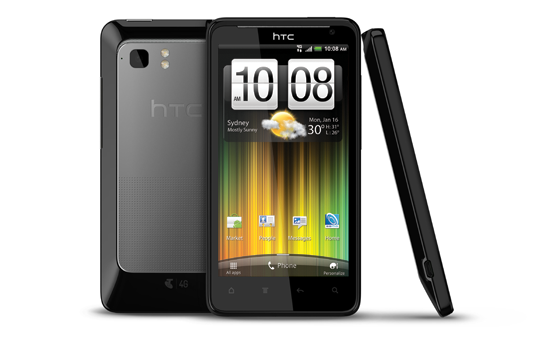HTC Velocity 4G: Faster Than 3G but with Limited Coverage [Review]

HTC fans in Australia may well be heaving a sigh of relief. The first Long Term Evolution (LTE) Android smartphone - the HTC Velocity 4G - is all set to hit their markets.
However, it should be noted that LTE technology is actually a part of 3GPP (Third Generation Partnership Project) technology and does not exactly comply with 4G standards. On the other hand, future releases of LTE, referred to as "LTE Advanced" should comply with 4G standards.
Unfortunately, Telstra (the HTC's service provider) and its 4G service ports 1800MHz LTE spectrum onto the Velocity 4G phone, which is deemed the major drawback on a 4G network-capable phone.
The limitations of the service network aside, the Velocity 4G is expected to deliver up to five times the data transfer speeds of existing 3G networks. It is also the first phone in the country to employ dual-channel HSPA+ technology, which makes it the fastest phone, compared to rivals in non-4G coverage zones.
At the end of the day, although the device does offer superior network connectivity speeds, the lack of any special features other than the 4G network make it less desirable.
Features
The HTC Velocity 4G is no different from its predecessors either in terms of looks or features, except for the 4G capability. Incidentally, the phone is only the second product to have successfully adapted to 4G (LTE) network.
It is expected to deliver download speeds anywhere from 2 Mbps to 40Mbps and upload speeds from 1Mbps to 10Mbps. Besides, the phone can deliver impressive 3G speeds as well.
Why is 4G important?
The Velocity 4G facilitates faster access to mobile web pages and YouTube videos, besides offering faster upload times for photographs. It also enhances the overall browsing experience with faster download times for e-mail attachments and browser plug-ins.
However, in order to access that speed, the phone must be within a 4G coverage zone. Otherwise, the device is programmed to switch back to dual-channel HSPA+ technology to boost 3G network speeds.
Look and Feel
Apart from its impressive 4G capabilities, the Velocity 4G retains the looks and design aspects of its predecessors. It features an appealing glossy black bezel with tapered edges and an aluminum rear panel giving it a luxurious feel.
Inheriting the standard build quality that is synonymous with HTC smartphones, the phone adds a bit more plastic to its armoury. However, the plastic body, together with a glossy display, makes it a fingerprint magnet.
The phone feels a bit oversized for a 4.5-inch display, partly owing to its slightly bulky body. Besides, it is also thicker than iPhone 4S. Its rounded edges, however, do enhance the grip.
The Velocity 4G sports a 4.5-inch qHD touch-screen display running at a resolution of 540x960. The obvious point is that the display resolution is significantly lower than the likes of the iPhone 4S and the Galaxy Nexus. It is, nevertheless, handy enough to watch films, slideshows and play games.
Performance
The HTC Velocity 4G inherits similar functionalities as its predecessors. Powered by the Android 2.3 Gingerbread OS, the phone features stunning scrolling animations and home screen widgets, although most users may prefer Android's Vanilla UI.
The interface is built around the famed HTC Sense UI, with the usual home screen customisation features including screen lock with four customisable shortcuts and the ability to position widgets in the centre of the screen, besides adding a 3D rotating effect while switching between home screens.
The 1.5GHz processor onboard does make the phone fairly responsive. However, it is perhaps advisable to upgrade the operating system to the more efficient Android 4.0 Ice Cream Sandwich.
Pros
4G and dual-channel HSPA+ compatibility
Good build quality
Good performance in non-4G zones
Cons
Limited area coverage on 4G network
Android 4.0 upgrade awaited
Verdict
The HTC Velocity 4G is undoubtedly the fastest phone on the Australian market, despite its LTE network coverage across non-4G zones. However, the speed difference isn't too significant compared to its 3G counterparts. Overall, if you are looking for a better featured phone, it is worth waiting for the Mobile World Congress announcements, as new smartphones are likely to come out.
Must Read: Top 5 Ways to Hack-Proof Your Mobile Phone
Must Read: Aliens: Colonial Marines Release Delayed until Autumn 2012
Must Read: Samsung Loses Second Mobile Technology Patent Case Against Apple
© Copyright IBTimes 2025. All rights reserved.






















